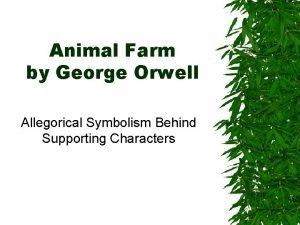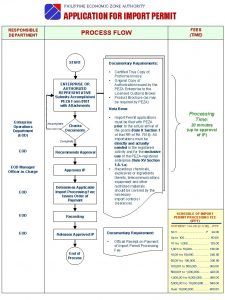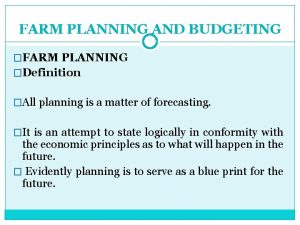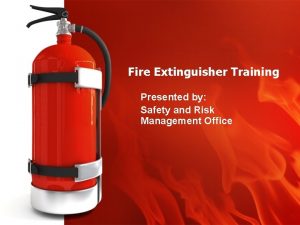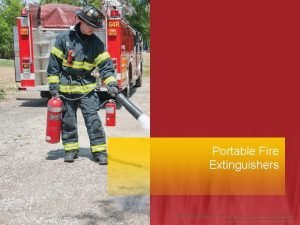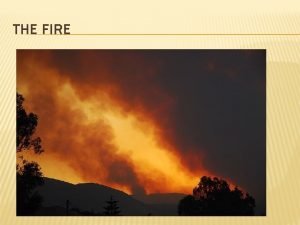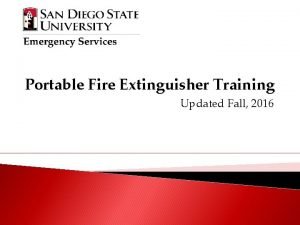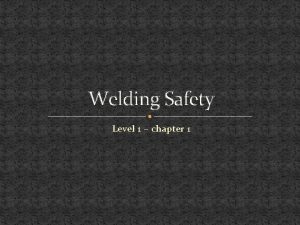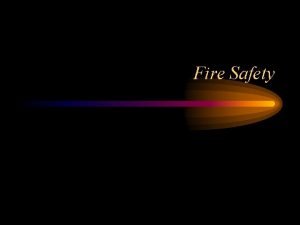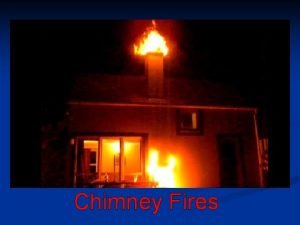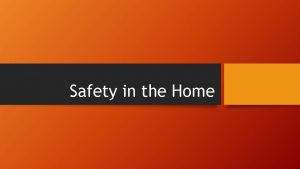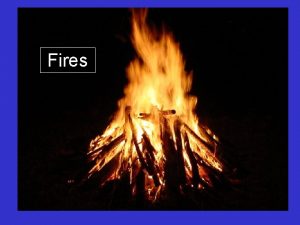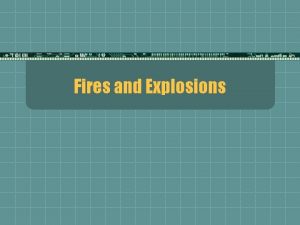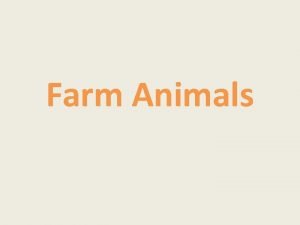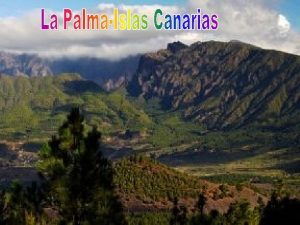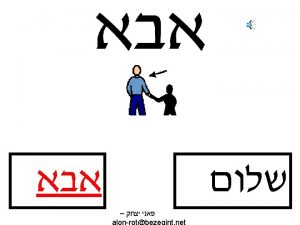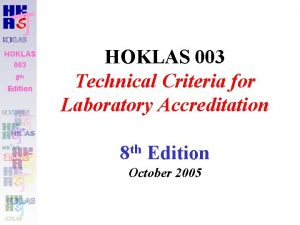SF 003 Preventing Farm Fires Ag Ed Net













- Slides: 13

SF 003 Preventing Farm Fires Ag. Ed. Net. com Farm Management Library This presentation was produced and is copyrighted by Stewart-Peterson® Inc. 2003 -2005. Permission is granted for use by active Ag. Ed. Net. com® subscribers. All other use is prohibited. STEWART-PETERSON is a Registered Trademark.

The fire problem … Millions of dollars in damage to homes and farms each year Deaths of hundreds of people annually The best protection is prevention.

What is the “fire triangle”? Three elements, commonly referred to as the fire triangle, must be present: Fuel Heat or Ignition Source Subtracting Oxygen any one of these elements from a situation will eliminate any chance of fire.

Removing fuel from the fire triangle … Use good housekeeping. Pick up and dispose of all combustible garbage and scraps. Clear areas around buildings of weeds and brush. Firebreaks can provide protection. Place oily rags in metal containers with a lid. USDA photo

Removing heat/ignition from the fire triangle … No smoking near combustible materials Allow hot equipment to cool before leaving an area.

Three classes of fire … Class A: ordinary combustibles like wood, paper and hay ◦ Extinguish with a Class A fire extinguisher ◦ Water removes heat and oxygen and neutralizes fuel

Three classes of fire … Class B: flammable liquids such as gasoline, diesel fuel, grease and solvents. ◦ Carbon dioxide extinguisher blocks oxygen ◦ Never use water – will spread flames

Three classes of fire … Class C: electrical fire ◦ Use carbon dioxide or dry chemical extinguishers. ◦ Never use water – could electrocute firefighter

Using a fire extinguisher … Determine type of fire Hold extinguisher upright Stand back 3 -5 feet Pull safety pin Aim at base of flames Squeeze trigger firmly Apply in back and forth motion Microsoft photo

Safety check of fire extinguisher … 1. 2. 3. 4. 5. Is the nozzle clear of any obstructions? Is the hose free of cracks? Is the safety ring in place? Is the extinguisher fully charged? Is the extinguisher free of any dents? Contact your fire department if you find any defects!

What to do if the fire is too big for an extinguisher … Call the nearest fire department immediately. Find out if anyone is trapped by the flames. Stay calm! Know your exact location – address and/or fire number. Know the source and size of the fire, and if anyone is trapped inside. USDA photo/Ken Hammond

Reduce your risks … Install smoke alarms on each floor of your home and business. Change smoke alarm batteries each spring and fall when you change your clocks. Use prevention techniques. Understand what to do in case of a fire and stay calm.

www. agednet. com 800 -236 -7862 This presentation was produced and is copyrighted by Stewart-Peterson® Inc. 2003 -2005. Permission is granted for use by active Ag. Ed. Net. com® subscribers. All other use is prohibited. STEWART-PETERSON is a Registered Trademark.
 What was the problem with the farm tools in animal farm
What was the problem with the farm tools in animal farm Who does mollie represent in animal farm
Who does mollie represent in animal farm Peza farm in process
Peza farm in process Physical farm planning
Physical farm planning Race acronym
Race acronym Analyse
Analyse Type of fire that involves flammable liquids
Type of fire that involves flammable liquids 2007 greek forest fires
2007 greek forest fires A destroyer simultaneously fires two shells
A destroyer simultaneously fires two shells Class c fires
Class c fires Biggest forest in europe
Biggest forest in europe Most welding environment fires occur during
Most welding environment fires occur during Different fires
Different fires Marco koper
Marco koper

